The top 7 essential spices for sausage making are black pepper, garlic powder, fennel seed, paprika, mustard seed, dried thyme, and salt. These spices form the foundation for all sausage recipes, from Italian to Mexican chorizo. Whether you're a beginner or a pro, mastering these spices will elevate your sausage game.

Table of Contents
- Why Spices Matter in Sausage Making
- Essential Spice Staples for Any Sausage Recipe
- International Flavors: Regional Twists on Sausage Spices
- DIY Spice Blends for Homemade Sausages
- How to Store and Use Your Sausage Spices Like a Pro
- Spice Buying Guide: What to Look For
- Frequently Asked Questions About Sausage Spices
- Final Thoughts
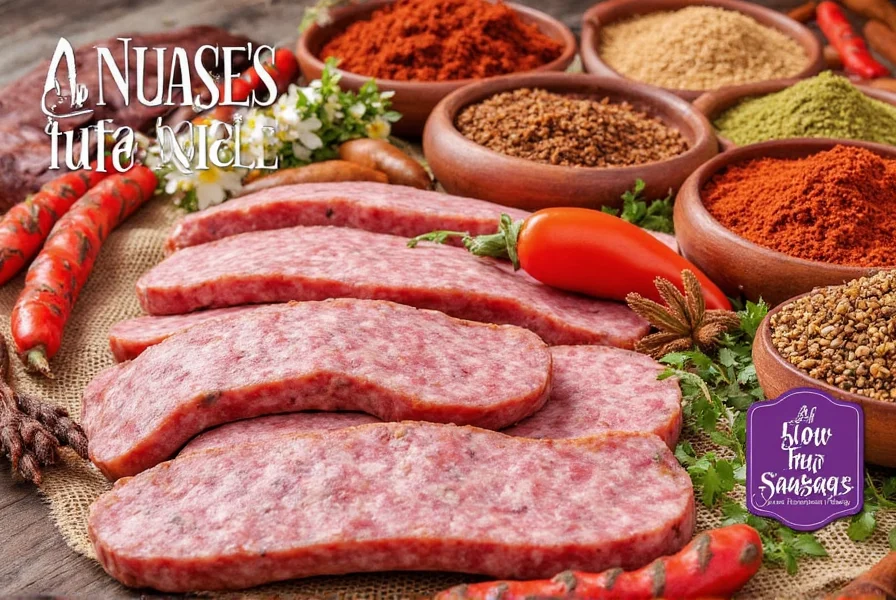
Why Spices Matter in Sausage Making
Sausage isn’t just ground meat stuffed into casing — it's a canvas for flavor. The right blend of spices can transform simple ingredients into something memorable, whether you're going for smoky, spicy, sweet, herbal, or savory notes. Spices do more than add taste; they also:
- Brighten up fatty cuts of meat
- Preserve the sausage naturally (especially antimicrobial ones like garlic and mustard)
- Enhance texture and mouthfeel
- Bring regional authenticity or innovation
A Quick Comparison: Fresh vs. Cured vs. Smoked Sausage Spices
| Type of Sausage | Common Spices Used | Purpose of Spices |
|---|---|---|
| Fresh Sausage (e.g., Italian) | Fennel, garlic, black pepper, marjoram | To enhance aroma and freshness |
| Cured Sausage (e.g., Chorizo) | Paprika, salt, garlic, vinegar | Preservation + deep, earthy flavor |
| Smoked Sausage (e.g., Andouille) | Cayenne, paprika, thyme, garlic powder | Add heat and balance smoked depth |

Essential Spice Staples for Any Sausage Recipe
No matter which type of sausage you're making, there are a few go-to spices that belong in every home butcher's pantry. Let's break them down by function and flavor profile.
Top 7 Must-Have Spices for Sausage Making
- Black Pepper: Adds subtle heat and bite; enhances other spices
- Garlic Powder: A staple for umami and aroma; avoids raw bite from fresh garlic
- Fennel Seed: Essential for Italian sausage; has a mild licorice flavor
- Paprika: Smoked paprika = smoky depth; sweet paprika = color & mild sweetness
- Mustard Seed: Common in German bratwursts; adds tang and texture
- Dried Thyme: Herby backbone; pairs well with pork and lamb
- Salt: Crucial for preservation, binding, and flavor enhancement
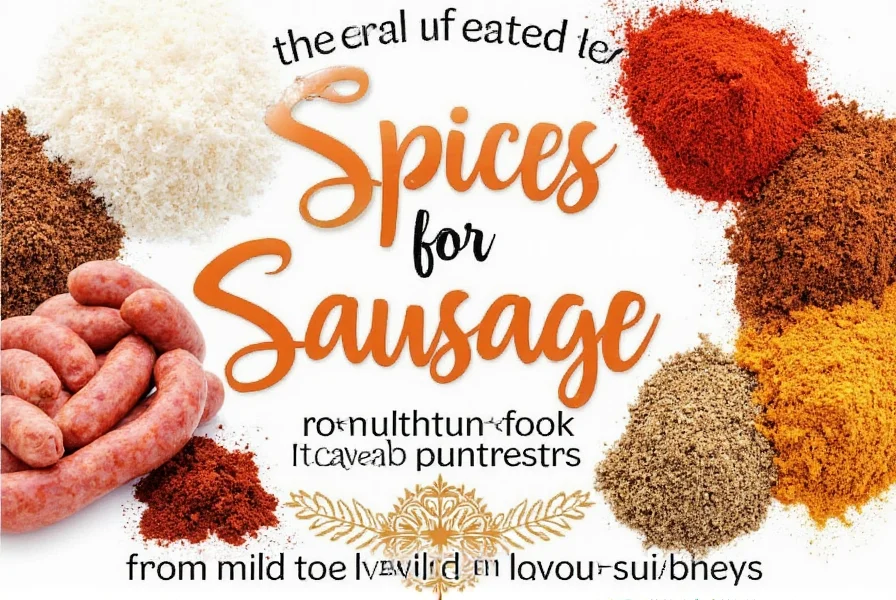
Pro Tip: Salt Quantity Matters
For most sausage recipes, aim for around 1.5% to 2% salt by weight of the meat. Too little and your sausage lacks structure and flavor; too much, and it becomes inedibly salty. Always use non-iodized salt like sea salt or kosher salt to avoid bitterness.
International Flavors: Regional Twists on Sausage Spices
If you've ever bitten into a bratwurst and thought, "I wish this tasted more like my grandma's kitchen in Mexico," you're ready to explore global flavor inspiration. Here are some classic spice combos from around the world.
Popular Regional Spice Profiles
| Region | Signature Spices | Key Ingredients | Typical Sausage Type |
|---|---|---|---|
| Germany | Mace, marjoram, caraway | Butter, beer, pork | Bratwurst |
| Mexico | Chili powder, cumin, oregano | Lime, cilantro, lard | Chorizo |
| Italy | Fennel, red pepper flakes | White wine, pecorino cheese | Italian sausage |
| France | Tarragon, shallots, nutmeg | White wine, cream | Andouille |
| Eastern Europe | Paprika, garlic, caraway | Pork shoulder, apple | Kielbasa |

Spice Spotlight: Fennel vs. Anise
Fennel seeds are often confused with anise seeds because both have that distinct licorice flavor. However, fennel has a milder, sweeter taste and is the preferred choice for sausage making due to its compatibility with pork and beef. Anise, while flavorful, can be overpowering if used in large amounts.
DIY Spice Blends for Homemade Sausages
Creating your own spice blends gives you control over flavor intensity, heat levels, and ingredient quality. Here are three custom mixes you can make at home:
1. Classic Italian Blend
- Fennel seed – 2 tbsp
- Crushed red pepper flakes – ½ tsp
- Garlic powder – 1 tsp
- Marjoram – ½ tsp
- Black pepper – 1 tsp
- Salt – 2 tsp
This blend works perfectly in sweet or hot Italian sausages. Add a splash of white wine for extra complexity.
2. Mexican Chorizo Base
- Smoked paprika – 2 tbsp
- Ground cumin – 1 tsp
- Coriander – 1 tsp
- Oregano – 1 tsp
- Garlic powder – 1 tsp
- Vinegar or lime juice – 1–2 tbsp
This base creates that unmistakable red, richly spiced chorizo flavor. Perfect for tacos, stews, or breakfast scrambles.
3. German Bratwurst Mix
- Caraway – 1 tsp
- Mace or nutmeg – ½ tsp
- Marjoram – ½ tsp
- Onion powder – 1 tsp
- Garlic powder – 1 tsp
- Black pepper – 1 tsp
Pair this with cold lager or apple slices for a true Bavarian experience.

How to Store and Use Your Sausage Spices Like a Pro
You spent time choosing the best spices — now keep them tasting great! Proper storage ensures longevity and potency. Here's how to treat your spices right:
- Air-tight containers: Use glass jars or tins with tight-fitting lids.
- Dark storage: Light breaks down flavor compounds. Keep spices away from windows or open shelves above stoves.
- Use within 1–2 years: Whole spices last longer than ground ones. Fennel seeds? Great for 3 years. Ground paprika? Best within 18 months.
- Label clearly: Especially important if you create custom blends. No one wants to guess what's in "Mystery Mix #7" next month.
Tip: Toast Spices Before Grinding
Lightly toast whole spices like fennel seeds or coriander in a dry skillet before grinding. It wakes up the essential oils and boosts flavor dramatically.
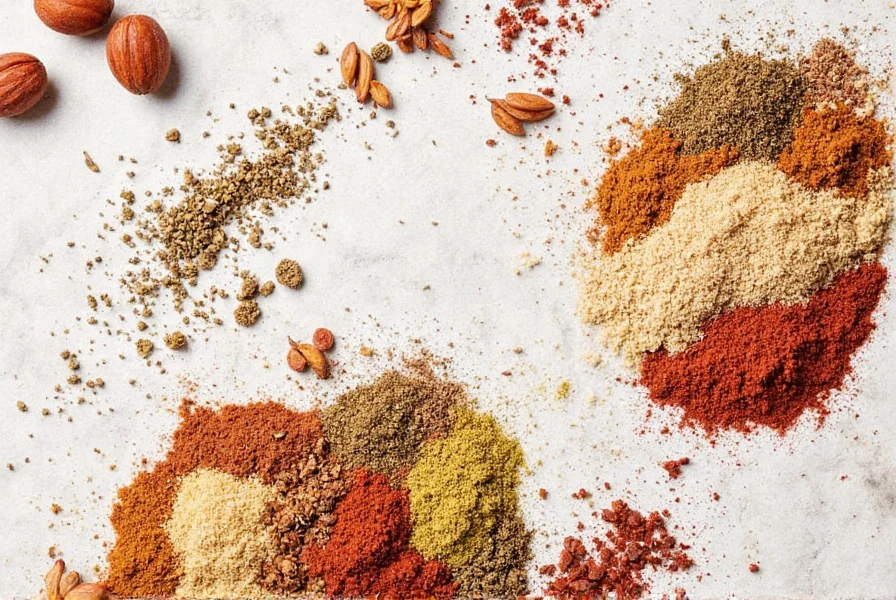
Spice Buying Guide: What to Look For
Choosing the right spice brand can feel overwhelming with so many options. Here's a breakdown of what matters when shopping for spices for sausage.
Things to Consider When Buying Spices
- Freshness: Look for packaging with clear expiration dates. Avoid products without any indication of age.
- Quality: Opt for organic or single-origin spices when possible. They tend to have richer flavor profiles.
- Grind size: For sausages, a fine grind is ideal unless the recipe specifies otherwise. Whole spices can be ground using a spice grinder or mortar and pestle.
- Allergens & additives: Check labels if you have dietary restrictions or prefer minimal processing.
Recommended Brands for Sausage Lovers
| Brand | Best For | Features | Target Audience |
|---|---|---|---|
| Penzeys Spices | Homemade sausage enthusiasts | Wide variety, bulk pricing, no fillers | Home cooks & DIY sausage makers |
| McCormick Gourmet | Quick, consistent results | Easily available in supermarkets | Beginners and casual users |
| The Spice Lab | Professional kitchens and serious hobbyists | Organic, high-potency, exotic spices | Advanced sausage crafters |
| Simply Organic | Health-conscious sausage lovers | Certified organic, fair trade practices | Organic food advocates |
| Spice Garden | Unique blends and international flavors | Authentic ethnic seasonings | Adventurous eaters and global cuisine fans |
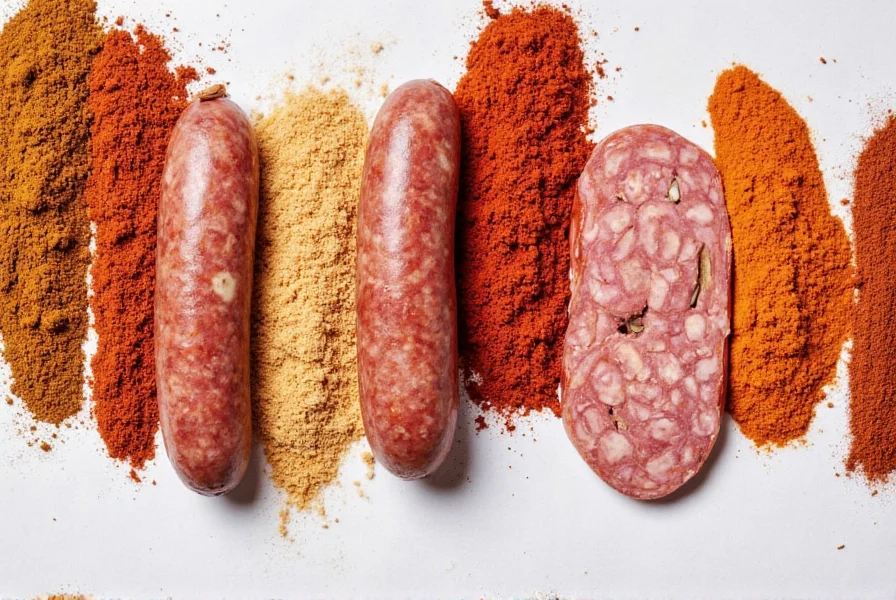
Frequently Asked Questions About Sausage Spices
What are the 7 essential spices for sausage making?
The 7 essential spices every sausage maker should have are: black pepper (for subtle heat), garlic powder (for umami), fennel seed (essential for Italian sausage), paprika (for color and smokiness), mustard seed (for tang), dried thyme (for herbal notes), and salt (for preservation and flavor). These form the foundation for most sausage recipes worldwide.
How much spice should I use in my sausage recipe?
The general rule is to use about 1-3% of the total meat weight in spices. For salt specifically, aim for 1.5-2% of the meat weight. Over-spicing can overpower the meat flavor, while under-spicing leaves your sausage bland. Always start with conservative amounts and adjust in small increments - you can always add more, but you can't take it out!
Can I use fresh herbs instead of dried in sausage?
You can use fresh herbs, but they behave differently than dried. Use about 3 times more fresh herbs than dried (since dried herbs are more concentrated). Fresh garlic can sometimes cause texture issues or spoilage concerns in cured sausages, so many experts recommend garlic powder for consistent results. Fresh herbs work best in fresh sausages that will be cooked immediately.
What's the difference between fennel and anise in sausage?
While both have licorice-like flavors, fennel seeds are milder and sweeter, making them the preferred choice for sausage (especially Italian varieties). Anise seeds have a stronger, more pronounced flavor that can easily overpower other ingredients if used in large amounts. Fennel pairs exceptionally well with pork, which is why it's the standard in most Italian sausage recipes.
How long do sausage spices last before losing potency?
Whole spices like fennel seeds can stay fresh for 2-3 years when properly stored. Ground spices lose potency faster - about 1-1.5 years. The best way to check is to smell them; if the aroma is weak, the flavor will be too. For critical sausage making, use spices within 1 year for optimal flavor impact.
Can I make sausage without certain spices if I have allergies?
Absolutely. Sausage making is adaptable. If you have allergies to common spices like garlic or mustard, you can create delicious alternatives. For garlic allergy, try asafoetida (hing) in tiny amounts. For mustard allergy, increase other aromatic seeds like coriander. The key is maintaining the proper salt content (1.5-2% of meat weight) for texture and preservation, while experimenting with safe alternatives for flavor.
What spices work best with different meats in sausage?
Different meats pair well with specific spices: Pork loves fennel, sage, and garlic; beef works with bolder spices like cumin, chili, and black pepper; chicken benefits from milder herbs like thyme, sage, and lemon zest; lamb shines with rosemary, mint, and cumin; game meats often pair well with juniper berries, bay, and red wine. Always consider the fat content - fattier meats can handle stronger spices.
Should I toast spices before adding them to sausage?
For the most vibrant flavor, yes! Toasting whole spices like fennel seeds, mustard seeds, or coriander in a dry skillet for 1-2 minutes before grinding releases essential oils and dramatically enhances flavor. However, be careful not to burn them. For pre-ground spices, this step isn't necessary. Many professional sausage makers consider this small step the difference between good and exceptional sausage.
Final Thoughts
Sausage making is as much about science as it is about art, and spices are the brushstrokes that bring the masterpiece to life. With this guide in hand, you're ready to experiment confidently — from the humble backyard grill to the ambitious homemade charcuterie board. Don't be afraid to play with proportions, try new combinations, or let your heritage inspire your spice rack.
Whether you're hosting a cookout or simply enjoying a weekend breakfast, mastering spices for sausage is a journey worth savoring. So grab your favorite meat, your favorite spices, and start stuffing — your tastiest sausage is just a spice blend away!
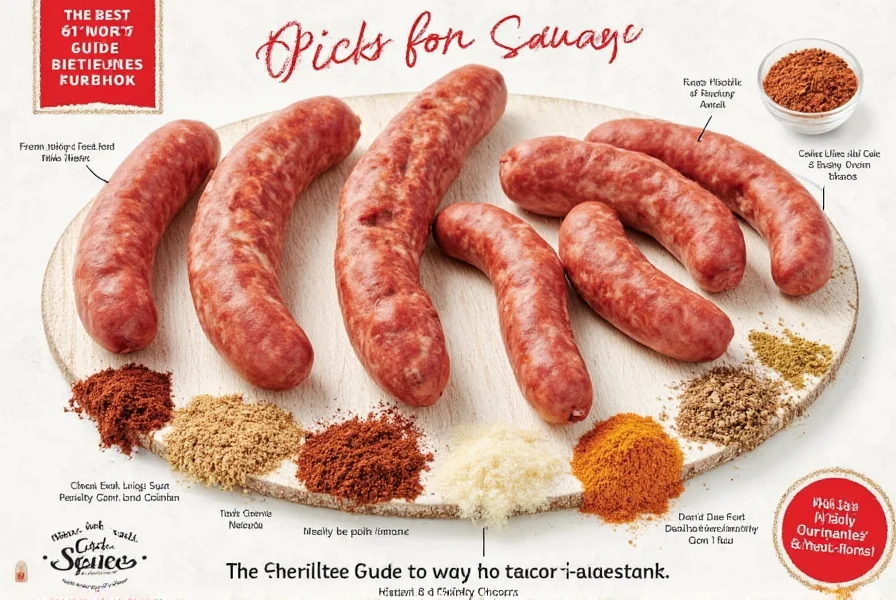











 浙公网安备
33010002000092号
浙公网安备
33010002000092号 浙B2-20120091-4
浙B2-20120091-4